Physical Interactions With Bacteria and Protozoan Parasites Establish the Scavenger Receptor SSC4D as a Broad-Spectrum Pattern Recognition Receptor
- PMID: 35003072
- PMCID: PMC8739261
- DOI: 10.3389/fimmu.2021.760770
Physical Interactions With Bacteria and Protozoan Parasites Establish the Scavenger Receptor SSC4D as a Broad-Spectrum Pattern Recognition Receptor
Abstract
Since the pioneering discoveries, by the Nobel laureates Jules Hoffmann and Bruce Beutler, that Toll and Toll-like receptors can sense pathogenic microorganisms and initiate, in vertebrates and invertebrates, innate immune responses against microbial infections, many other families of pattern recognition receptors (PRRs) have been described. One of such receptor clusters is composed by, if not all, at least several members of the scavenger receptor cysteine-rich (SRCR) superfamily. Many SRCR proteins are plasma membrane receptors of immune cells; however, a small subset consists of secreted receptors that are therefore in circulation. We here describe the first characterization of biological and functional roles of the circulating human protein SSC4D, one of the least scrutinized members of the family. Within leukocyte populations, SSC4D was found to be expressed by monocytes/macrophages, neutrophils, and B cells, but its production was particularly evident in epithelial cells of several organs and tissues, namely, in the kidney, thyroid, lung, placenta, intestinal tract, and liver. Similar to other SRCR proteins, SSC4D shows the capacity of physically binding to different species of bacteria, and this opsonization can increase the phagocytic capacity of monocytes. Importantly, we have uncovered the capacity of SSC4D of binding to several protozoan parasites, a singular feature seldom described for PRRs in general and here demonstrated for the first time for an SRCR family member. Overall, our study is pioneer in assigning a PRR role to SSC4D.
Keywords: bacteria; circulating receptors; parasites; pattern recognition receptors; scavenger receptor cysteine-rich.
Copyright © 2021 Cardoso, Santos, Almeida, Sá, Pérez-Cabezas, Oliveira, Tavares and Carmo.
Conflict of interest statement
The authors declare that the research was conducted in the absence of any commercial or financial relationships that could be construed as a potential conflict of interest.
Figures

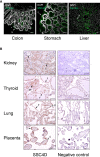
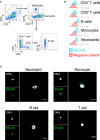
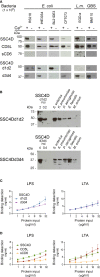
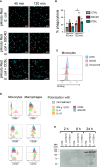
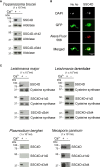
Similar articles
-
Molecular and functional characterization of mouse S5D-SRCRB: a new group B member of the scavenger receptor cysteine-rich superfamily.J Immunol. 2011 Feb 15;186(4):2344-54. doi: 10.4049/jimmunol.1000840. Epub 2011 Jan 7. J Immunol. 2011. PMID: 21217009
-
The Scavenger Receptor SSc5D Physically Interacts with Bacteria through the SRCR-Containing N-Terminal Domain.Front Immunol. 2016 Oct 13;7:416. doi: 10.3389/fimmu.2016.00416. eCollection 2016. Front Immunol. 2016. PMID: 27790215 Free PMC article.
-
Role of scavenger receptor from Octopus ocellatus as a co-receptor of Toll-like receptor in initiation of TLR-NF-κB signaling during anti-bacterial response.Dev Comp Immunol. 2018 Jul;84:14-27. doi: 10.1016/j.dci.2018.01.023. Epub 2018 Feb 2. Dev Comp Immunol. 2018. PMID: 29409792
-
PRR Function of Innate Immune Receptors in Recognition of Bacteria or Bacterial Ligands.Adv Exp Med Biol. 2018;1112:255-280. doi: 10.1007/978-981-13-3065-0_18. Adv Exp Med Biol. 2018. PMID: 30637703 Review.
-
Pattern recognition receptors and their role in innate immunity: focus on microbial protein ligands.Contrib Microbiol. 2008;15:45-60. doi: 10.1159/000135685. Contrib Microbiol. 2008. PMID: 18511855 Review.
Cited by
-
CD5L as a promising biological therapeutic for treating sepsis.Nat Commun. 2024 May 15;15(1):4119. doi: 10.1038/s41467-024-48360-8. Nat Commun. 2024. PMID: 38750020 Free PMC article.
-
Specific interaction between Group B Streptococcus CC17 hypervirulent clone and phagocytes.Infect Immun. 2024 Apr 9;92(4):e0006224. doi: 10.1128/iai.00062-24. Epub 2024 Mar 22. Infect Immun. 2024. PMID: 38514466 Free PMC article.
-
The liver in sepsis: molecular mechanism of liver failure and their potential for clinical translation.Mol Med. 2022 Jul 30;28(1):84. doi: 10.1186/s10020-022-00510-8. Mol Med. 2022. PMID: 35907792 Free PMC article. Review.
-
Per-and polyfluoroalkyl substances and disrupted sleep: mediating roles of proteins.Environ Adv. 2024 Oct;17:100585. doi: 10.1016/j.envadv.2024.100585. Epub 2024 Sep 17. Environ Adv. 2024. PMID: 39512894 Free PMC article.
-
Association between plasma proteomic dynamic changes and metabolic outcomes in patients undergoing bariatric surgery.Int J Obes (Lond). 2025 Jun 5. doi: 10.1038/s41366-025-01812-7. Online ahead of print. Int J Obes (Lond). 2025. PMID: 40473959
References
Publication types
MeSH terms
Substances
LinkOut - more resources
Full Text Sources
Medical
Molecular Biology Databases

